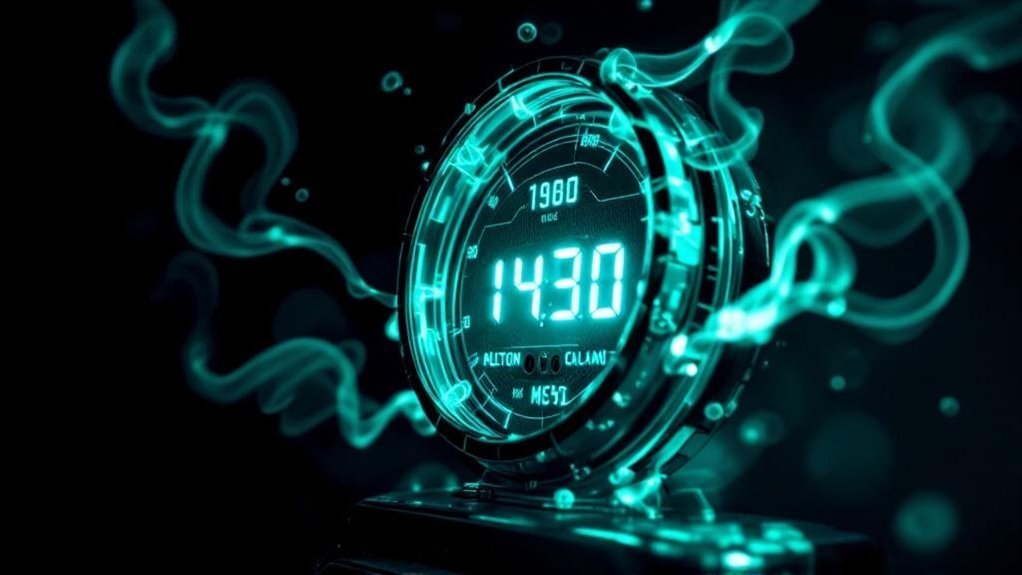Ethereum gas fees are transaction costs required to use the network – period. Think of them like blockchain toll booths that prevent spam and reward validators. Users pay in ETH based on gas units multiplied by base and priority fees. When network traffic surges, costs skyrocket due to simple supply and demand. Recent upgrades like EIP-1559 aim to make fees more predictable, but they’re still a pain point. There’s way more to this gas fee story.

The dreaded gas fees of Ethereum have become the bane of crypto enthusiasts everywhere. These pesky charges, paid in ETH for every single transaction on the network, aren’t just some arbitrary money grab – they’re actually essential for keeping the whole system running. Think of them as the toll booths of the blockchain highway, except these tolls prevent network spam and compensate the validators who keep things secure.
The math behind gas fees isn’t exactly rocket science, but it’s close. Every transaction needs a certain number of gas units, multiplied by both a base fee and a priority fee. One gas unit equals 0.000000001 ETH, also called Gwei. Simple transfers? Not too bad. Complex smart contract interactions? Better have deep pockets. Even the most basic ETH transfers require 21,000 gas units at minimum.
Gas units plus base fees plus priority fees equals your total cost. Simple math, complex implications for your crypto wallet.
Since the London Hard Fork in August 2021, the base fee gets burned (yes, literally destroyed), while validators pocket the priority fee – their little tip for playing blockchain traffic cop. Smart contracts enable automated transactions without intermediaries, making them worth the higher gas costs for many users.
Network congestion plays a massive role in how much users shell out. When everyone’s trying to squeeze their transactions into the next block, prices shoot up faster than a crypto bull run. It’s basic supply and demand, blockchain style.
And while recent upgrades like EIP-1559 tried to make fees more predictable, they’re still about as stable as a rookie trader’s portfolio.
The payment process itself is straightforward enough. No ETH, no service – period. Transactions without enough gas fail faster than a sketchy ICO. Modern wallets at least do the heavy lifting, calculating estimates and handling the mechanics.
But here’s the kicker – fees are exclusively paid in ETH, so newcomers better stock up before diving in.
Network upgrades keep trying to tackle the fee problem. The shift to Ethereum 2.0 promises better scalability through proof-of-stake and sharding.
Meanwhile, impatient users are fleeing to Layer 2 solutions or alternative blockchains like Polygon and Avalanche, where transactions cost less than a cup of coffee. Welcome to crypto, where even the solutions need solutions.
Frequently Asked Questions
Why Do Gas Fees Vary so Much Between Different Times of Day?
Gas fees spike during business hours when everyone’s trying to make transactions at once. Simple supply and demand.
Network gets congested, fees shoot up.
Late nights and weekends? Ghost town – fees plummet.
Global time zones play a role too.
Europeans wake up, fees rise.
Americans log on, more congestion.
It’s like rush hour traffic, but for blockchain.
Can I Get a Refund if My Transaction Fails Due to Gas Fees?
Yes, but it’s not a full refund. Failed Ethereum transactions can trigger automatic partial gas fee refunds – specifically for unused gas.
The system returns the difference between the gas limit and what was actually used. No paperwork needed. It just happens. But here’s the kicker: some gas fees are gone forever, paid to validators who attempted to process the transaction. That’s just how it works.
How Do Layer 2 Solutions Affect Ethereum Gas Fees?
Layer 2 solutions slash Ethereum gas fees dramatically – sometimes up to 95%.
They work by bundling multiple transactions together off-chain, then submitting them as a single proof to the mainnet.
Pretty clever stuff.
Instead of every transaction clogging up Ethereum’s main network, Layer 2s handle the heavy lifting elsewhere.
Less congestion equals lower fees.
Simple math, really.
Speed goes up, costs come down.
Which Wallets Offer the Best Gas Fee Optimization Features?
MetaMask leads the pack with its robust gas customization tools and Layer 2 support.
Rainbow Wallet impresses with its clean interface and built-in gas optimization.
Argent stands out for Layer 2 focus, especially on zkSync.
Trust Wallet offers solid gas controls for multiple chains.
Frame and MyEtherWallet include advanced fee settings.
But here’s the kicker – they all basically do the same core stuff, just with different fancy buttons.
What Happens to the Gas Fees Collected From Transactions?
Gas fees in Ethereum split two ways.
The base fee gets burned – completely destroyed and removed from circulation forever.
Goodbye ETH!
Meanwhile, the priority fee (aka tip) goes straight to validators as a reward for processing transactions.
It’s a clever system really – validators get paid for their work while the burning mechanism helps control ETH supply.
Pretty neat economic design.
